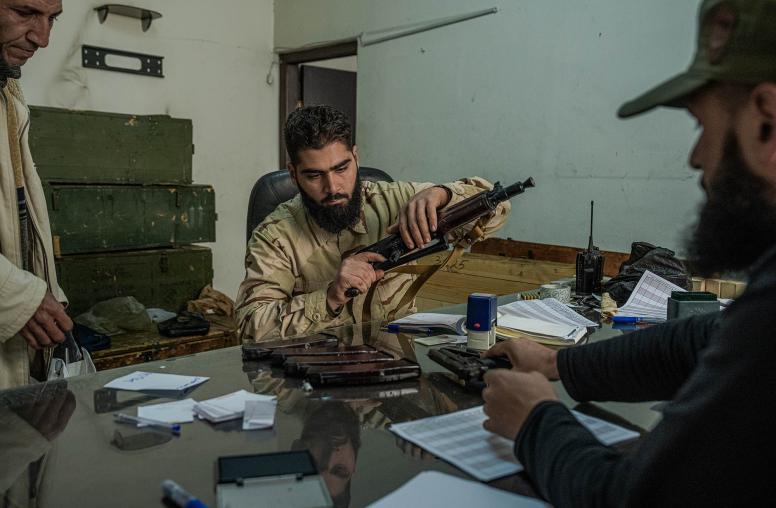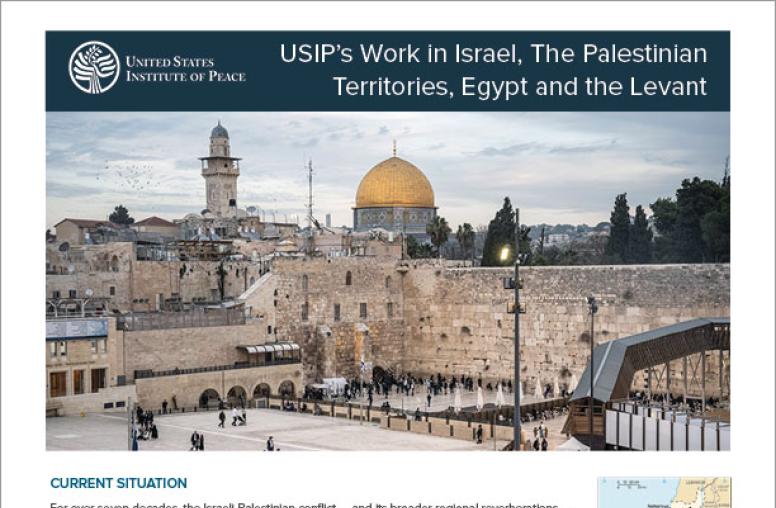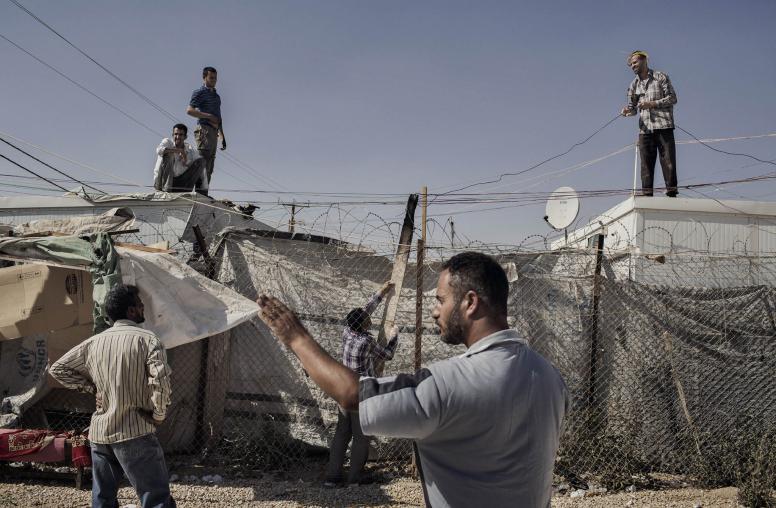U.N. Refugees Chief Guterres Urges Support for Fleeing Syrians
Calling the Syrian civil war and its spillover into neighboring countries “probably the worst humanitarian crisis in the world since the Rwandan genocide,” António Guterres, the United Nations High Commissioner for Refugees, used a March 12 appearance at the Institute to appeal for greater international support for Syrians who’ve fled their homes because of the conflict and for the neighboring countries that are taking in millions of them.

“It’s not a question of generosity to stop this conflict, to support the Syrians. It’s a question of enlightened self-interest,” Guterres said during a forum at the U.S. Institute of Peace (USIP) co-sponsored with Oxfam America. The event marked the impending third anniversary of the start of the Syrian conflict. “This is becoming a nightmare for all of us, everywhere.”
Guterres, a former Portugese prime minister now in his second term as High Commissioner, criticized the international community’s humanitarian support in the crisis as “out of proportion with the needs.”
Guterres laid out the most recent estimates of the scope of the Syrian humanitarian challenge: more than 3 million people have fled Syria and in excess of 2.5 million of them have registered as refugees; 6.5 million are displaced within Syria; 3 million Syrians need assistance within the country; 200,000 live in areas besieged by Syrian government forces and 40,000 in areas surrounded by opposition fighters.
The pro-opposition Syrian Observatory for Human Rights has reported that more than 140,000 Syrians have died in the conflict; the U.N. earlier this year said that hazardous conditions in Syria made updating its own estimates impossible.
A report released this week by the United Nations Children’s Fund (UNICEF) found that the number of children affected by the civil war had more than doubled in the past year. At least 10,000 have been killed since the conflict started in March 2011. The report called Syria “one of the most dangerous places on earth to be a child.”
Guterres said that only 30 percent of Syrian refugee children are able to attend school. He recalled meeting a boy in the huge Zaatari refugee camp in Jordan who played ceaselessly with a toy gun. “Violence is a way of life when he’s 4 years old,” he said. “The risk of a lost generation is enormous.”
Lebanon, which is currently hosting 963,000 Syrian refugees -- the equivalent of one-quarter of its population -- is facing “dramatic pressure” from the refugee presence and the spillover of the Syrian conflict, he said. The World Bank has estimated that the cost to the Lebanese economy by the end of this year will be $7.5 billion, with unemployment doubling, salaries falling and rents rising.
Jordan has so far taken in 585,000 Syrian refugees and Turkey 635,000, according to Guterres’s agency, known as UNHCR. Iraq has accepted 227,000 refugees and Egypt 135,000.
Guterres laid out three related UNHCR appeals. The first asks donor nations and others to support the work of international humanitarian agencies and non-governmental organizations working in Syria and regionally so that the rights and dignity of Syrians can be respected “in a minimum way.”
The second appeal is a call for “massive financial solidarity” with the nearby countries that are playing host to fleeing Syrians. Guterres urged support for Jordanian and Lebanese development and stabilization plans.
“I don’t think the world can afford the collapse of Jordan and Lebanon,” Guterres said.
The last appeal is for countries outside of the region to provide legal mechanisms for admitting Syrian refugees.
“It is not acceptable,” he said, for other nations to close their doors to the Syrians and leave the task to countries of the region alone. He contrasted Turkey’s admission of 635,000 refugees with Bulgaria shutting its border to them after some 8,000 had crossed.
“It is absolutely essential to show,” said Guterres, “that there is solidarity, to show that there is burden-sharing.” European countries and the United States need to expand their own programs for humanitarian admission and resettlement of Syrians, he said.
Guterres acknowledged that “the track record of these appeals is quite mixed.” He also said the international community has not shown the capacity to overcome its differences and help resolve the conflict politically. “Humanitarian efforts can only minimize the suffering but will never -- will never -- solve the problem of the Syrian people,” he said.
Given that humanitarian resources for Syrians in and out of the country are insufficient, he said that the more than 100 agencies and organizations involved in the work are giving priority to life-saving measures and protection of the most vulnerable, wherever they can be reached. Aid workers are using innovative approaches for providing assistance, including lower-cost mechanisms like the transfer of cash to needy families to secure essentials.
“Whenever possible, the best way to solve this problem is to give them cash,” Guterres said of the refugees. “They will know how to manage that.”
In introductory comments, Steven Heydemann, vice president of USIP’s Center for Applied Research on Conflict and director of Syria programs, noted that the U.S. government had spent more than $1.7 billion to support humanitarian work with Syrians but that “the scale of displacement and suffering still vastly outweighs the level of the resources that [have] been brought to bear.”
“It’s a global problem and a global responsibility,” Heydemann added later.
The session with Guterres was followed by a conversation with two Syrian civil society leaders that was moderated by Oxfam America President Raymond Offenheiser.
Rim Turkmani, president and founder of Madani, a non-profit group registered in the U.K. to work on democratic transition issues, said “there’s no one model” to explain how Syrians are surviving, though civilians are pressuring both the Syrian regime and the armed opposition to stop fighting in some areas and to secure the delivery of humanitarian aid and services.
In local negotiations that have not succeeded, Turkmani said, “the most important spoiler was the regional and international interference.”
The incentives some have to make money through Syria’s war economy are a “second spoiler,” she said, and the lack of independent mediators, monitors and peacekeepers have also contributed to the breakdown of local ceasefires.
Rajaa Altalli, co-founder and co-director of the Center for Civil Society and Democracy in Syria, urged that there be no fourth anniversary of the start of the conflict. “It needs a bold solution and thinking outside of the box,” she said. After three years of despair, Altalli said, many Syrians “start to surrender and give up.”
Explore Further
- USIP and the FP Group held the first PeaceGame on December 9. Topic: Syria's conflict
- Institute specialists prepared Syria background papers for the PeaceGame
- USIP's Peace Brief series on sectarianism in the Middle East
- USIP's "The Day After" project
- UNHCR on the humanitarian crisis in and around Syria
- Oxfam International on its work on behalf of Syrians


